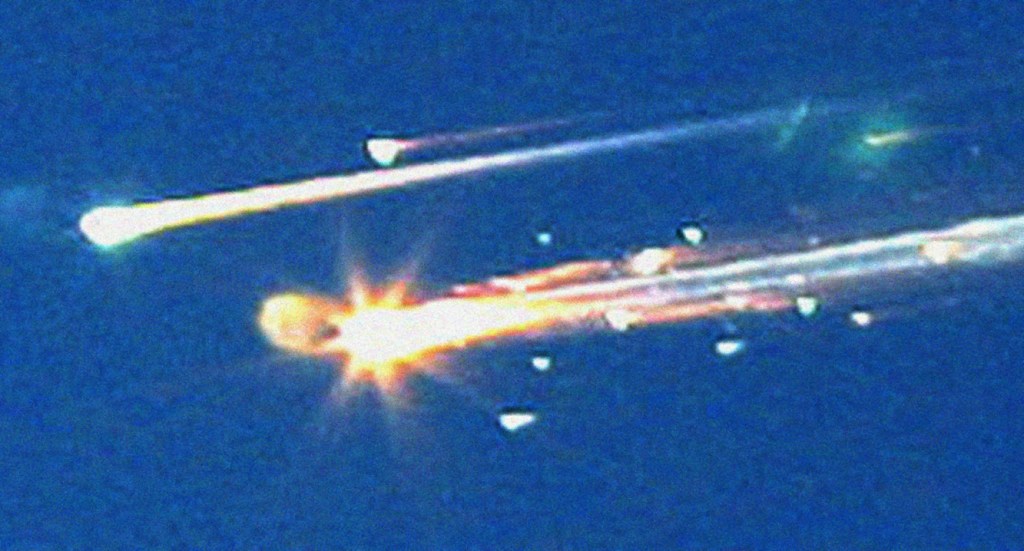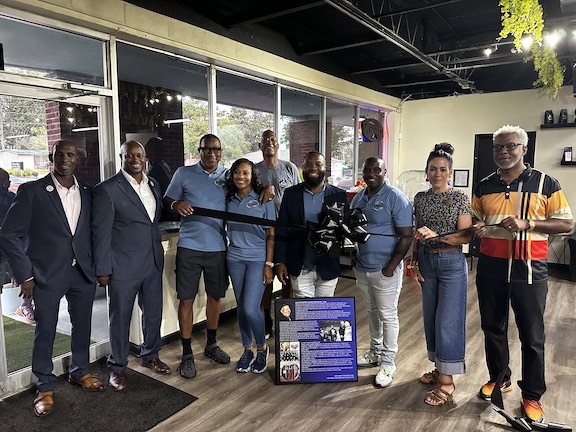Shuttle Disaster: Remembering Lowndes link 20 years later
Published 6:00 am Saturday, January 28, 2023

- Debris from the space shuttle Columbia streaks across the sky over Tyler, Texas, in this Saturday, Feb. 1, 2003 file photo. Pieces of the shuttle were scattered over East Texas with some debris falling in downtown Nacogdoches, Texas. Columbia disintegrated 39 miles over Texas as it returned from a 16-day mission.
VALDOSTA — The end of January is a somber time for space enthusiasts. The anniversaries of NASA’s three greatest disasters all fall within a few days of each other on the calendar.
Friday, Jan. 27, marked 56 years since America’s first space calamity, the Apollo 1 fire, when three astronauts died in a blaze in their space capsule on the launch pad a month before they were supposed to lift off.
Trending
Saturday, Jan. 28, marks 37 years since seven astronauts died when the Space Shuttle Challenger exploded slightly more than a minute after launch.
Wednesday, Feb. 1, is the 20th anniversary of a space tragedy with strong connections to Lowndes County.
On that date in 2003, the Space Shuttle Columbia, coming off more than a week in orbit on a seemingly perfect science mission, began its re-entry through the atmosphere to land at Kennedy Space Center in Florida.
As the shuttle glided across the North American skies toward its landing, something went very wrong in the skies above Texas.
Unknown to NASA, a debris strike during launch — hardened insulation foam tearing loose from the huge external fuel tank — had torn a hole in the leading edge of one of Columbia’s wings. On re-entry, atmospheric heat friction normally held off by heat-resistant panels on the wing’s forward edge got into the wing structure through the hole, causing massive damage; the shuttle broke apart 200,000 feet above the Lone Star State, killing all seven astronauts.
In the wake of the disaster, the shuttle program was put on hold for two years as experts and congressional investigators studied what happened.
Trending
Changes to the shuttle were mandated and then-President George W. Bush ordered the aging shuttle fleet retired as soon as its work in building the International Space Station was done. The last shuttle landed for good in 2011.
The shuttle’s commander on the doomed flight was a man well-remembered in Lowndes County.
Col. Rick Husband, a Texas native, earned his pilot’s license when he was 17. He was commissioned as an Air Force second lieutenant in 1980.
In 1982, shortly after completing F-4 Phantom II jet interceptor and fighter bomber flight training, he was assigned to Moody Air Force Base to fly the F-4E, according to his official NASA biography.
He and his wife, Evelyn, were at Moody for three years and were members of First United Methodist Church.
In 1994, he was selected for the astronaut corps. Husband’s first space flight was a 10-day mission on the space shuttle Discovery in 1999, which performed the first docking with the International Space Station and delivered four tons of supplies for a station crew yet to be launched.
His second flight took off Jan. 16, 2003, and he was the commander of the science and research mission. The shuttle was the Columbia.
On the day of the Columbia disaster, The Valdosta Daily Times received numerous calls from Lowndes County residents wanting to share their memories of Husband and his family.
“None of us were surprised he reached his dream of becoming an astronaut,” Lynn Tessin said at the time.
Tessin and her husband, Howard, were friends with the Husbands and attended the same Sunday school class with them.
In the days that followed, memorial services to honor Husband were held at both First United Methodist Church and Moody Air Force Base. He was buried in Llano Cemetery in his hometown, Amarillo, Texas.
The memorials
In the wake of the disaster, Husband was honored in many ways. He was posthumously awarded the Congressional Space Medal of Honor. The airport in his hometown — Amarillo, Texas — was renamed the Rick Husband Amarillo International Airport.
A hill on Mars, a crater on the moon and an asteroid have all been named after him. El Paso, Texas, has a Rick Husband Drive and an unmanned resupply spacecraft for the International Space Station was named the S.S. Rick Husband.
The Florida Institute of Technology has a building called Husband Hall, while Maxwell AFB in Alabama has a Husband Auditorium.
NASA planned to observed a Day of Remembrance for the astronauts who died in all three disasters — Apollo 1, the shuttle Challenger and the shuttle Columbia — at all of its space centers Thursday, Jan. 26.





